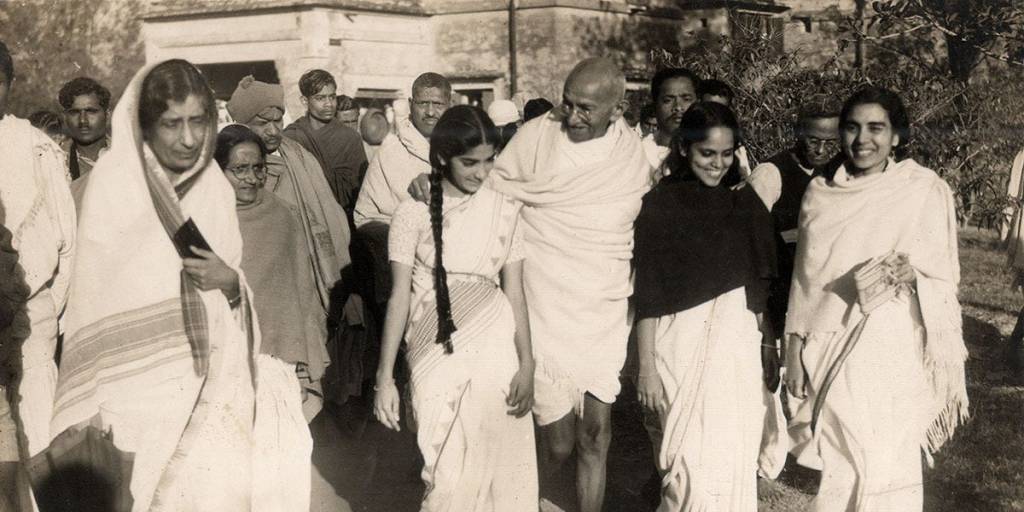Day six of this year’s Toronto International Film Festival. I feel lucky to have entered the world of Anand Patwardhan’s documentary filmmaking through his latest, most personal film, The World is Family. I wandered into the screening enchanted by the title, which seems not to be an anomaly but an extension of some sort of artistic hand. In Patwardhan’s body of work there are many poetic names that also seem a touch philosophical: In Memory of Friends (1990), A Narmada Diary (1995), Reason (2018). He is widely known for the two-hour documentary, War and Peace (2002), which deals with nuclear weapons testing in India and Pakistan in 1998 and the politics and nationalistic rhetoric surrounding these events.
Indian politics, religion in the subcontinent, and Mahatma Gandhi figure prominently in Patwardhan’s documentaries, and The World is Family is not an outlier in this respect. His family, on both his maternal and paternal side, have personal connections to the independence movement in India, to Partition, and to Gandhi. But, as the filmmaker discussed with the audience after the screening, The World is Family is about his parents, and politics and history serve more as a backdrop. For those familiar with Patwardhan’s work, the tone of his latest feature-length documentary will seem more meditative and less prickly. (It depends, however, how you respond to the back of a needle versus the tip of one.)

I can list a few types of scenes that are uncomfortable to watch on screen, either real or constructed: infidelity, assault and physical violence; blood, if you’re squeamish. But in seeing this film I found one other: dying. I do not mean the enactment or portrayal of death but the intimate moments of one’s dying. Even a photograph of a deceased person can confront one’s sight in a way that doesn’t register emotionally until a few seconds later. Photographs and archival footage are used generously throughout the film, from Patwardhan’s family archive as well as public archives. Patwardhan ‘shot’ conversations and scenes in the film over the course of three decades and during COVID the material revealed itself to him as being more interesting and deserving of an audience.
Patwardhan’s preferred aesthetic—simple, dignified, and straightforward—stuck out to me, making it easier to write about the film. Near the beginning, while interviewing a guide, Patwardhan beckons to someone to hand him the camera so he himself can continue to film while having the conversation. The result, in the next frame, is a view of the person from the chin up, and a closer shot. At times the narrative as told through oral tradition is difficult to follow, as well it should, demanding the whole of the viewer’s attention. Geographically the film traipses from Sindh to Delhi to Bengal, with much of the movement attributed to Patwardhan’s mother Nirmala whose first love happened to be ceramics and whose schooling at the experimental university Santiniketan brought her closer to Gandhi.
The World is Family is a 96-minute film made entirely by the filmmaker (with the aid of contextual footage, music, and other public domain and copyrighted materials)—its release to a worldwide audience is an opulent humility afforded to someone at the very beginning and past the zenith of celebrity in their career. This film expresses hope that more people will know Patwardhan’s work. At the core of the portrait of his parents is a somber but joyful meditation of beginnings and ends. I don’t think it tries to say that beauty fades, but that it carries less and less meaning as time goes on, or perhaps needs to be transfigured in order to be understood again.
Patwardhan seemed touched by the viewing, and in answering some questions after the public screening was gracious and attentive to those present in the room, spoke frankly about his views when asked. I myself was happy and somewhat relieved to witness the openness he had to the audience, signifying a willingness to be seen, and as if they too could partake in the naming of things.

Leave a comment